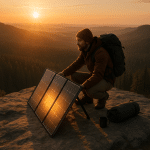Embarking on a hiking adventure, whether a simple day hike or a multi-day trek, is an exhilarating experience that invigorates both the body and mind. But before lacing up your boots and hitting the trail, it’s crucial to prepare with the right essentials. A proper hiking essentials checklist can make all the difference between a memorable adventure and one filled with stress or even danger. As someone who has traversed countless trails across different seasons and terrains, I understand firsthand how well-chosen gear directly impacts safety, comfort, and enjoyment on the trail.
In this comprehensive guide, I’ll walk you through the seven key items every outdoor enthusiast should pack, breaking down their features, how to select them, and best practices for their use. From navigation tools to nutrition and clothing strategies, we’ll cover the essentials needed to face the wilderness confidently. Along the way, I’ll spotlight some trusted gear such as the Suunto MC-2G Global Compass, Sawyer MINI Water Filtration System, Adventure Medical Kits Mountain Series Backpacker, and more, providing you with expert insights to help you build your ideal hiking kit. Let’s dive right in and make sure your next hiking outing is safe, enjoyable, and adventure-ready!
1. Navigation Tools: Your Ultimate Trail Guide
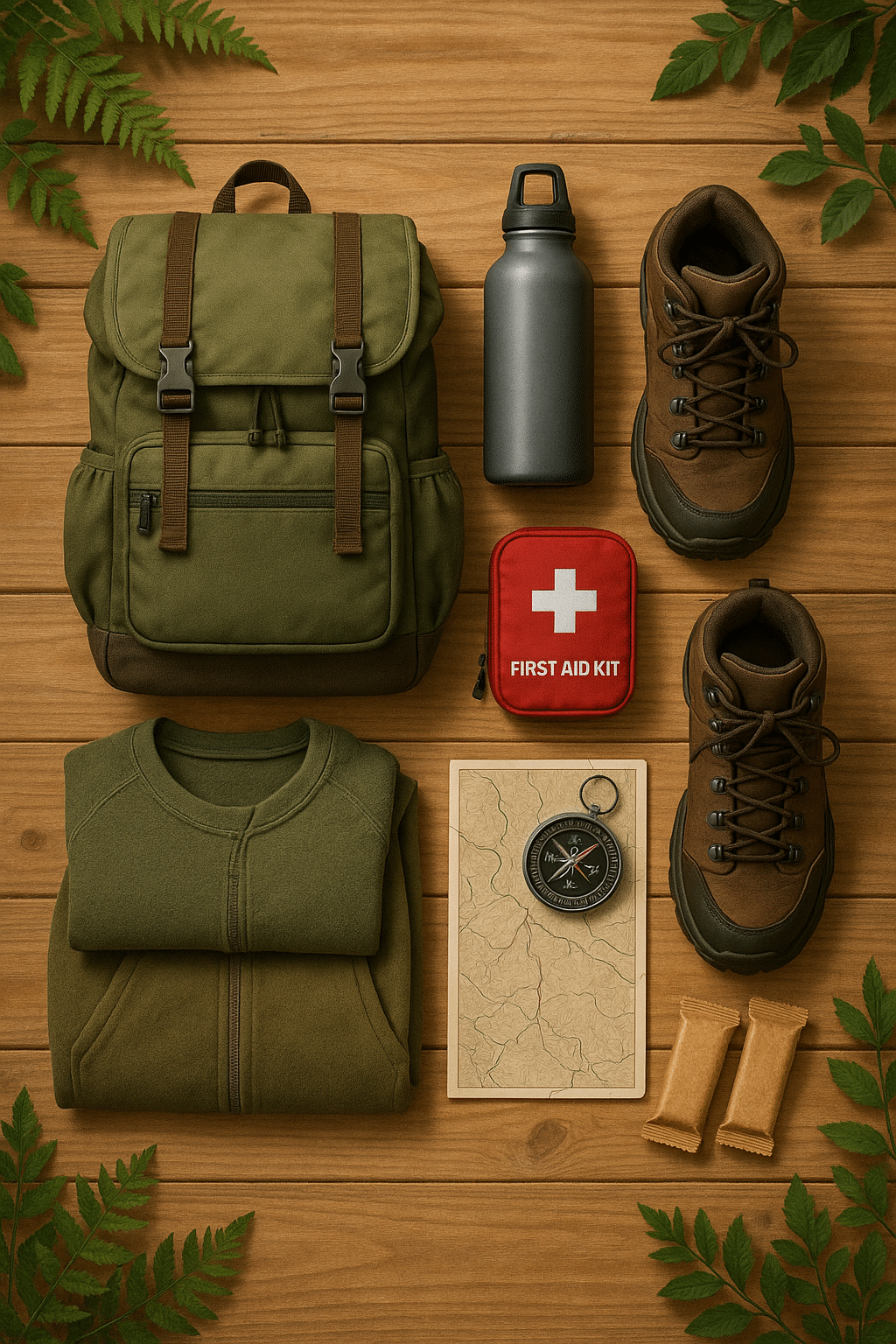
When you’re venturing into the great outdoors, reliable navigation tools are non-negotiable. Whether crossing dense forests, scaling mountain ridges, or traversing unfamiliar terrain, knowing exactly where you are—and how to get to your destination—can mean the difference between an inspiring journey and a scary misadventure.
Understanding the Importance of Map and Compass
Before the age of GPS, hikers relied heavily on map and compass skills. Despite the rise of technology, these tools are the foundation of outdoor navigation—trusted, battery-free, and always ready. A topographic map provides detailed information on terrain features like elevation, landmarks, and trails, while a compass helps orient yourself in the right direction.
Mastery of basic orienteering is essential: learning to take bearings, align your map with the environment, and mark your route ensures you won’t get lost—even if electronic devices fail.
Choosing the Right Compass: Spotlight on Suunto MC-2G Global Compass
Among high-quality compasses, the Suunto MC-2G Global Compass stands out as a professional-grade instrument. What sets it apart?
- Globally Balanced Needle: It works accurately anywhere in the world, thanks to its jewel bearing and globally balanced needle.
- Sighting Tools: Its large mirror, sighting notch, and hole enable precise bearing measurements and even help signaling if necessary.
- Adjustable Declination: You can fine-tune the compass to account for magnetic declination (difference between magnetic north and true north), enhancing accuracy.
- Clinometer: For serious hikers interested in slope measurement and terrain analysis.
- Durable, Liquid-Filled Construction: Provides smooth needle movement and stability in all conditions.
- Luminous Markings: Facilitates use in low light or nighttime situations.
Weighing just 75 grams and compactly sized, the MC-2G is an ideal companion on any hike where navigation is critical. It’s available from trusted retailers like New Day Sports and Going Gear with varied price points, often around the $70-$95 range.
Integrating Technology: GPS, Altimeter, and Smartphone Apps
Technology complements traditional navigation tools. A GPS device or smartphone app with offline topographic maps provides real-time location tracking and route planning. Many hiking watches now include barometric altimeters that give elevation readings, useful for mountain terrain.
However, technology should never replace fundamental map and compass skills due to risks like battery drain or signal loss. Instead, it’s smart to carry both analog and digital navigation tools.
Practical Tips for Navigational Skills
- Always start by orienting your map to the landscape.
- Check compass declination for your hiking area and adjust your compass accordingly.
- Practice taking bearings on known landmarks.
- Use GPS devices as a backup rather than your sole method.
- Consider carrying a lightweight whistle or signaling mirror for emergencies.
By mastering these navigation essentials, you’ll hike with confidence and peace of mind.
2. Water and Hydration Systems: Staying Refreshed on the Trail
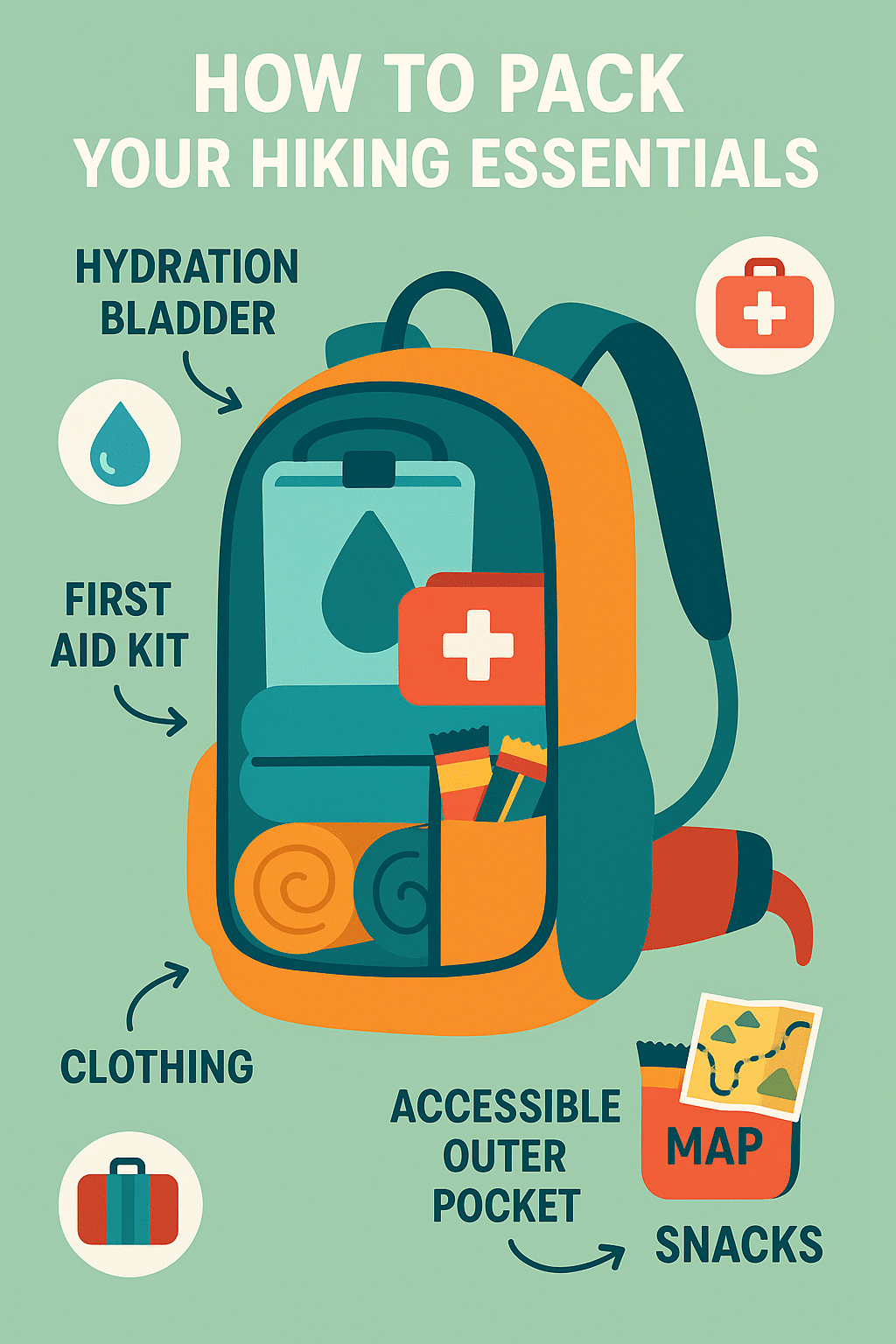
Hydration is the cornerstone of sustained outdoor performance. Dehydration affects energy, concentration, and overall health, making effective hydration choices a vital part of any hiking essentials checklist.
Evaluating Hydration Options: Water Bottles vs. Hydration Packs
- Water Bottles: Simple, sturdy, and easy to clean. Great for short hikes where you can refill frequently.
- Hydration Packs: These backpacks include an internal reservoir with a drinking tube, allowing for hands-free sipping and better hydration pacing.
Both have their place. Packs excel on longer, hotter hikes where consistent hydration is needed without stopping, but bottles are easier to fill at water sources and require less cleaning.
Portable Filtration Solutions: Sawyer MINI Water Filtration System and LifeStraw Personal Filter
Access to safe drinking water can be limited on many trails. Carrying a filtration system lets you drink from natural sources confidently.
-
Sawyer MINI Water Filtration System: Weighing just 2 ounces, the Sawyer MINI uses 0.1-micron absolute filtration, removing 99.99999% of bacteria and 99.9999% of protozoa. Its versatility lets you attach it to standard bottles or use with the included pouch or straw. It’s durable and filters up to 100,000 gallons, making it a long-term investment. You can grab one directly from Sawyer’s website.
-
LifeStraw Personal Water Filter: This iconic, compact filter also removes nearly all bacteria, parasites, and microplastics. It’s lightweight and lasts up to 1,000 gallons. LifeStraw’s sustainability mission adds a heartwarming bonus—each purchase helps provide clean water to children in need. Available via LifeStraw and other retailers like Amazon.
Choosing between these depends on your expected water sources, pack weight preferences, and budget, but either will increase safety significantly.
Hydration Best Practices and Electrolyte Management
- Drink small amounts regularly instead of gulping large quantities infrequently.
- Incorporate electrolyte powders or tablets to maintain mineral balance, especially on long or hot hikes.
- Start hydrated before hitting the trail.
- Know the signs of dehydration—headache, fatigue, dizziness—and act early.
By combining smart hydration strategies with dependable gear, you’ll keep your energy high and your adventure unfolding smoothly.
3. Emergency Preparedness and First Aid: Safety First
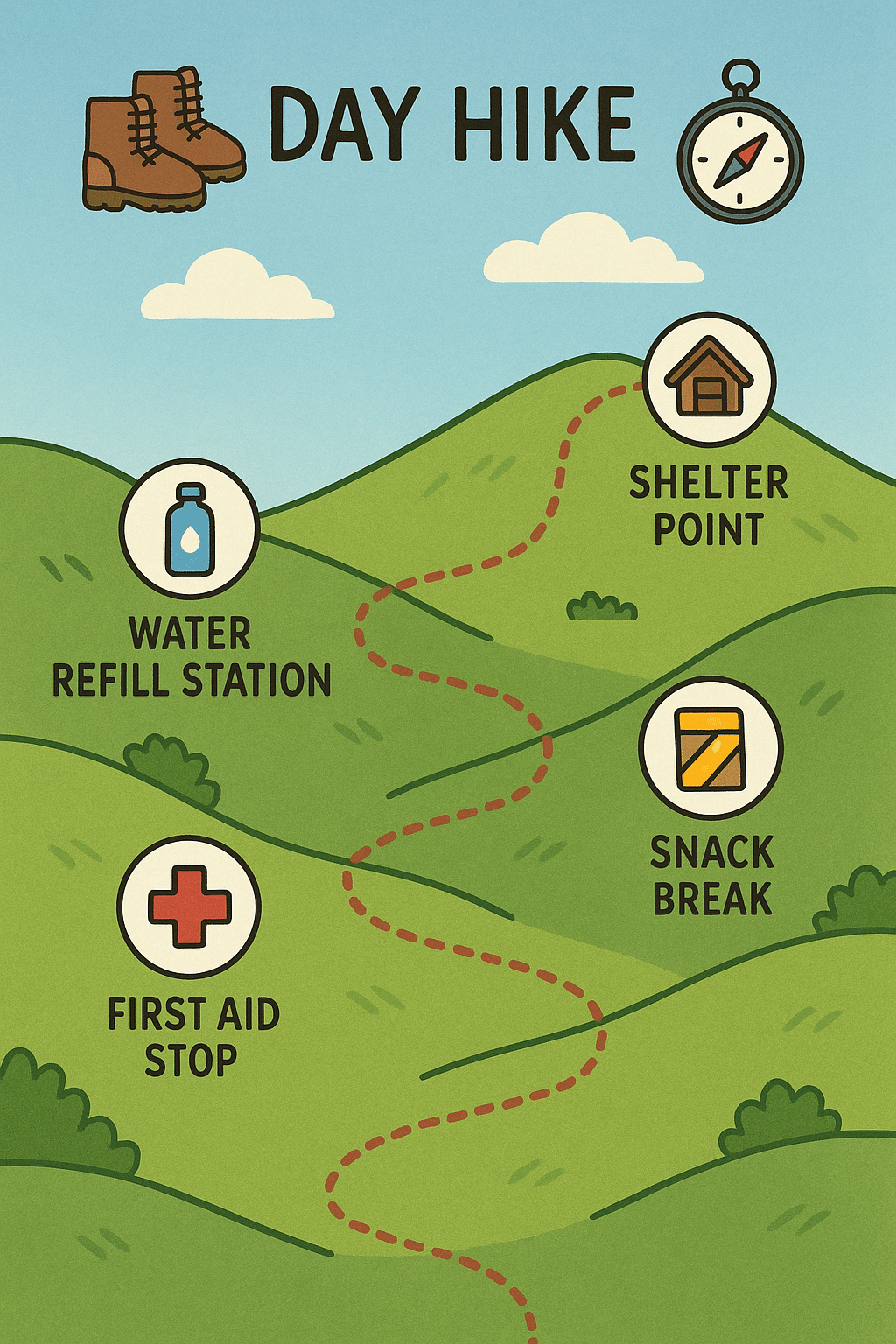
Emergencies on the trail can arise suddenly, from minor cuts to severe injuries. Preparing with a robust first aid and emergency kit gives you the tools and confidence to handle unforeseen events effectively.
Comprehensive First Aid Kits for Hikers: Featuring Adventure Medical Kits Mountain Series Backpacker
The Adventure Medical Kits Mountain Series Backpacker is specifically tailored for backpacking trips lasting 1-4 days and for 1-2 people. Here’s why I recommend it:
- Wound Care Supplies: Irrigation syringe for cleaning wounds, butterfly closures for precise wound sealing, tincture of benzoin (a protective skin sealant), and a variety of dressings.
- Trauma Tools: Includes a large trauma pad for controlling serious bleeding and an elastic bandage for sprains or strains.
- Backcountry Medications: Contains medications to manage pain, fever, stomach issues, and allergies—essential when help may be hours or days away.
- Blister Prevention: Moleskin patches to prevent painful blisters, an often overlooked but critical issue on trails.
- Organized Design: Clearly labeled pockets and an external injury map make finding the right supply quick during stressful situations.
Lightweight and compact (under 1 lb), this kit is your trail side hospital when needed. It’s available from Sportsman’s Warehouse and other outdoor retailers.
Essential Emergency Tools: Firestarters, Whistles, and Emergency Shelters
Alongside medical supplies, pack basic survival tools like:
- Firestarters: Waterproof matches, lighters, or magnesium fire-starters allow you to create warmth or signal rescuers.
- Whistles: Compact and loud, a whistle is invaluable to signal location without expending energy shouting.
- Emergency Shelter: A lightweight, reflective emergency blanket or bivvy keeps you protected if stranded overnight.
Packing for Injury Prevention and Response
- Trail awareness: Avoid risky shortcuts and unstable terrain.
- Proper footwear and gaiters to prevent sprains.
- Use trekking poles to offload stress from knees.
- Pack your first aid kit in an easily accessible compartment.
Planning for emergencies is not about expecting disaster but preparing sensibly so you can enjoy the wild without worry.
4. Lighting and Visibility: Enhancing Your Safety After Dark
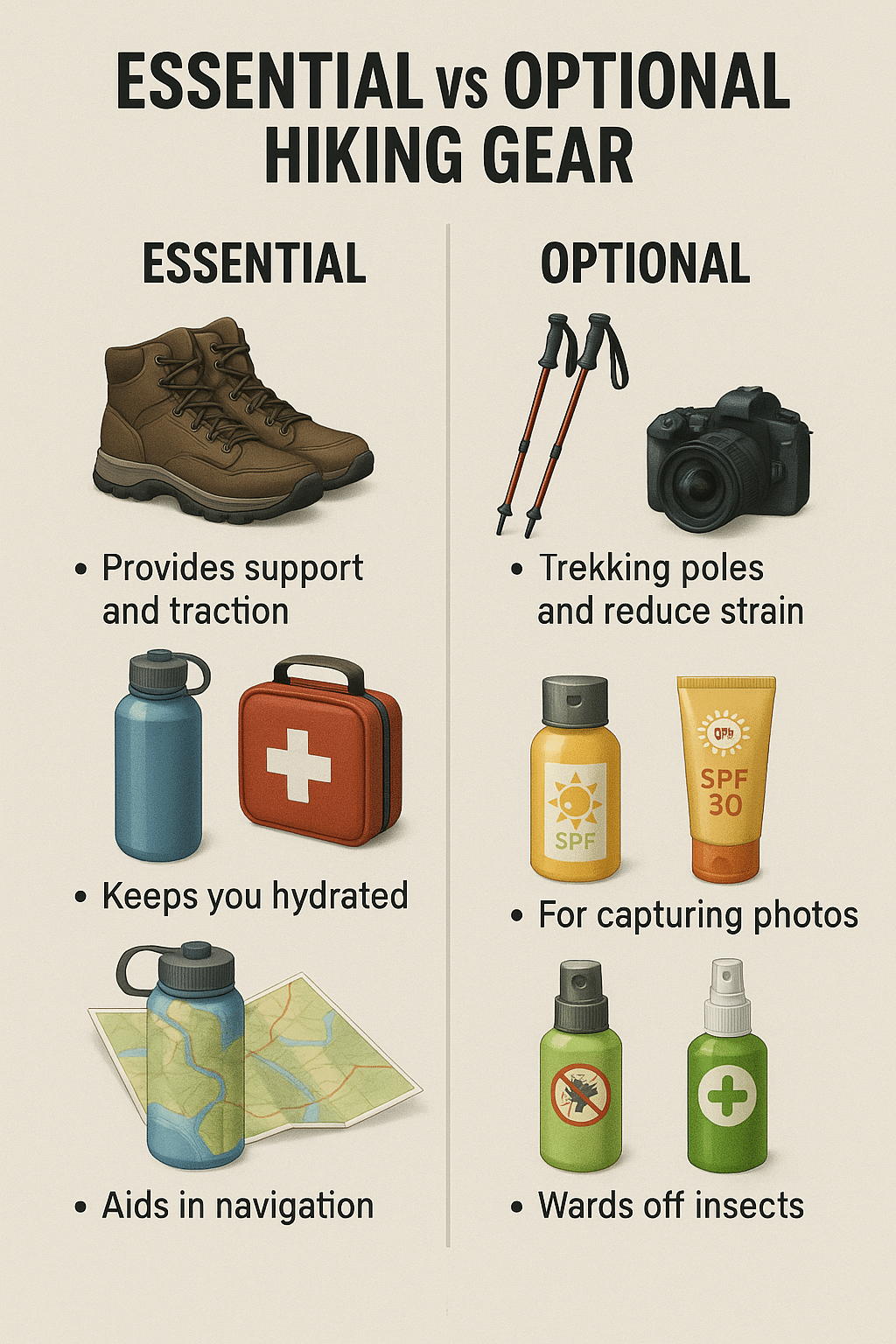
Even if you plan to hike during daylight, delays, unexpected circumstances, or enjoying nighttime nature all warrant dependable lighting.
Choosing the Right Headlamp: Benefits of Black Diamond Spot 350
The Black Diamond Spot 350 Headlamp is a favorite among hikers for several reasons:
- Brightness: Up to 350 lumens, adjustable to different intensities.
- PowerTap™ Technology: Instant brightness adjustments without cycling through modes.
- Battery Meter: Six-setting 3-LED indicator helps manage battery life efficiently.
- Waterproof: IPX8 rating means it withstands heavy rain or accidental submersion.
- Comfortable and secure fit: Essential when moving over rugged terrain in the dark.
It’s the perfect balance of power, durability, and user-friendly features, ensuring you can navigate safely or set up camp after sunset. Get it from Black Diamond’s official site or outdoors retailers like REI.
Additional Lighting Accessories and Battery Management
- Carry spare batteries that match your headlamp.
- Consider a small backup flashlight or lantern.
- Use red light mode on headlamps to preserve night vision while checking maps or gear.
Proper lighting significantly reduces accident risk and increases confidence on every trail.
5. Sun Protection Gear: Shielding Yourself from Harsh Elements
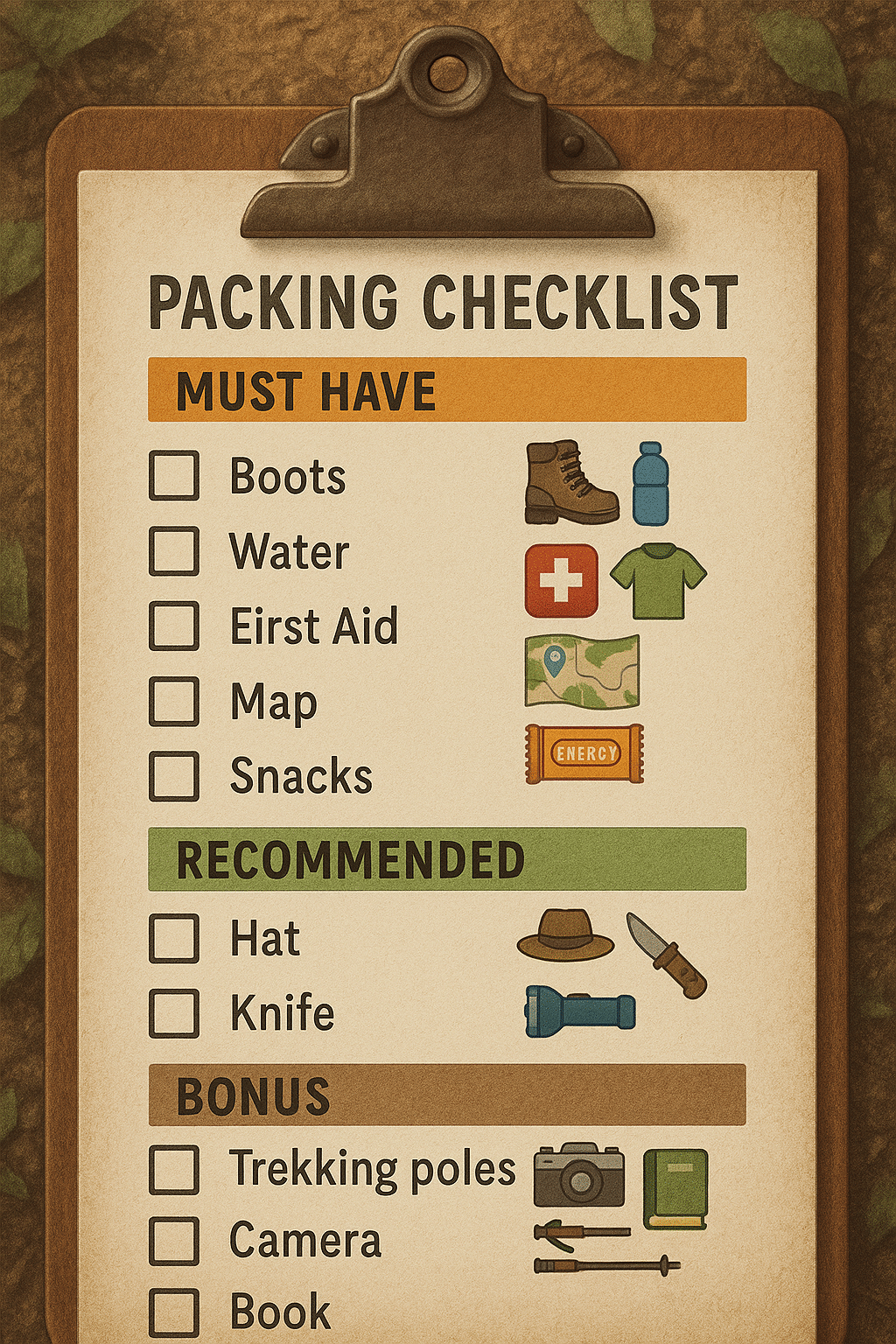
Sun exposure can be brutal on the trail, leading to sunburn, heat exhaustion, or long-term skin damage. The right sun protection gear is an absolute must-have in your hiking essentials checklist.
The Role of UPF-rated Clothing and Accessories
UPF (Ultraviolet Protection Factor) rated garments block harmful UV rays while keeping you comfortable. Lightweight, breathable, and moisture-wicking fabrics enhance protection without overheating.
Outdoor Research Seattle Sombrero Sun Hat Features and Benefits
The Outdoor Research Seattle Sombrero Hat is a versatile sun-shield designed for serious hikers:
- GORE-TEX 3-layer shell: Fully waterproof yet breathable.
- UPF 50+ Rating: Blocks over 98% of UV rays.
- Floating foam-stiffened brim: Channels rain and sun away from your face and neck.
- Tricot-lined crown: Helps wick sweat to keep you dry.
- Packable and Adjustable: Easily stowed in your pack; chin cord and cinch-band offer a secure fit.
This hat not only protects from sun and rain but also enhances comfort, limiting sun fatigue on long days. Available at Dick’s Sporting Goods and other online stores.
Sunscreen, SPF Lip Balm, and Sunglasses Essentials
- Always use broad-spectrum sunscreen with at least SPF 30.
- Reapply every 2 hours, or more frequently if sweating.
- Protect lips with SPF lip balm.
- Wear UV-blocking sunglasses to protect eyes from glare and UV damage.
These small but crucial steps keep your skin and eyes safe, helping you stay on the trail longer and healthier.
6. Essential Tools and Repair Items: Be Ready for Anything
Trail conditions and gear mishaps are unpredictable. Carrying a few smart tools and repair items ensures minor issues don’t snowball into trip-ending problems.
Multi-tools for Outdoor Versatility: The Leatherman Wave Plus Overview
The Leatherman Wave Plus Multitool packs 18 tools into one compact device:
- Combination pliers, wire cutters, knives, saw, scissors, multiple screwdrivers, bottle and can openers.
- Replaceable wire cutters prolong lifespan.
- Accessible with one hand, which is a huge plus on the trail.
Priced around $120, it’s a worthy investment to tackle gear fixes, food prep, or emergency jobs. Grab yours at REI or Amazon.
Repair Kits: Duct Tape, Gear Patches, and Other Must-haves
A small roll of duct tape (or duct tape strips pre-cut on a ruler), fabric patches, safety pins, and zip ties can resolve:
- Torn clothing or tents.
- Broken backpack straps.
- Equipment hitches.
These lightweight additions are invaluable for trail repairs.
Knife Safety and Utility in Hiking
A well-maintained knife is useful for food prep, first aid, and repairs. Always use knives carefully, store safely when not in use, and choose a locking blade for added safety on the move.
7. Nutrition and Clothing Considerations: Fuel and Comfort for Every Journey
Adequate nutrition and proper clothing are foundational to your hiking success and enjoyment.
Healthy Snack Options and Nutrient Timing
Pack calorie-dense, nutrient-rich snacks such as:
- Trail mix with nuts, seeds, dried fruits.
- Energy bars high in protein and carbohydrates.
- Electrolyte powders or tablets.
Eat small amounts frequently to maintain energy without overwhelming digestion. Plan larger breaks for balanced meals if your hike duration allows.
Layered Clothing Strategies for Variable Weather
Weather in the outdoors is unpredictable. Employing a layering system provides flexibility:
- Base Layer: Moisture-wicking fabrics to keep skin dry.
- Insulation Layer: Fleece or down for warmth.
- Outer Layer: Waterproof, breathable shell like rain jackets or windbreakers.
Adjust layers based on temperature and activity level to prevent overheating or chilling.
Footwear Selection and Its Impact on Hike Quality
Your feet carry you—investing in quality footwear pays off:
- Choose boots or trail shoes suited for terrain and weight load.
- Ensure proper fit to avoid blisters and foot pain.
- Use moisture-wicking socks, possibly wool or synthetic blends.
- Consider gaiters in wet or brush-heavy environments.
Good footwear improves stability, comfort, and injury prevention.
Bonus: Organizing Your Hiking Backpack for Optimal Efficiency
How you pack your gear affects your enjoyment and endurance on the trail.
Packing Strategies for Weight Distribution
Place heavier items close to your back and centered to maintain balance. Lighter items go farther away from your body, with frequently used tools in accessible pockets.
Combining Essentials for Easy Access
- Place first aid kit and navigation tools near the top or in external compartments.
- Hydration equipment should be reachable without unpacking the whole bag.
- Use stuff sacks or packing cubes to group like items and speed access.
Thoughtful organization reduces stress and makes your hike smoother.
Unique Perspective: The Psychology Behind Gear Selection and Its Impact on Hiking Experience
How Preparedness Enhances Confidence and Adventure Enjoyment
Packing with care cultivates trust in your kit and abilities. When you know your gear is reliable and adequate, you relax into the adventure, ready to embrace the unknown rather than fear it.
Minimalist vs. Comprehensive Gear: Finding Your Balance
Some hikers prefer ultra-light setups focused on essentials only, while others opt for comprehensive kits anticipating all contingencies. The key is aligning your gear choices with your trail, skill level, and comfort zone. Start with the core essentials and customize over time based on experience.
Q1: What is the best hiking essentials checklist for beginners?
A1: Beginners should focus on navigation tools (map, compass), reliable hydration (water bottle + filter), basic first aid, sun protection (hat, sunscreen), headlamp for lighting, multi-tool for repairs, and proper nutrition and clothing layers. This foundational gear covers safety and comfort.
Q2: How do I decide between a water bottle and a hydration pack for hiking?
A2: Water bottles are simple and good for short hikes with refill points, while hydration packs allow hands-free drinking and steady fluid intake, ideal for long or strenuous hikes. Consider your trail’s length, refilling opportunities, and comfort preferences.
Q3: What are the most important items in a hiking first aid kit?
A3: Critical first aid items include wound dressings, blister care (moleskin), bandages, antiseptic wipes, pain relief meds, and any personal medications. Emergency tools like a trauma pad and elastic bandage enhance injury response.
Q4: How can I prevent blisters on long hiking trips?
A4: Wear well-fitting boots and moisture-wicking socks, and apply moleskin or blister pads on pressure points before hiking. Keep feet dry and carry extra socks. Adjust footwear if discomfort occurs early.
Q5: What clothing layers do I need for hiking in variable weather?
A5: Use a moisture-wicking base layer, an insulating mid-layer (like fleece), and a waterproof breathable outer shell. Add or remove layers according to activity level and weather changes to stay comfortable without overheating or freezing.
- Mastering navigation tools—especially map and compass—is vital for safe hiking.
- Reliable hydration systems paired with portable water filters ensure safe, accessible drinking water.
- A well-stocked first aid kit and emergency tools prepare you for injuries and unexpected events.
- Quality lighting gear, such as the Black Diamond Spot 350 headlamp, extends safety beyond daylight.
- Effective sun protection with UPF clothing, sun hats, and sunscreen safeguards health.
- Carry versatile tools and repair items like the Leatherman Wave Plus multitool and duct tape.
- Strategic nutrition and layered clothing keep you fueled and comfortable across diverse conditions.
Packing a thoughtful hiking essentials checklist isn’t just about gathering gear; it’s about safeguarding your adventure and boosting your confidence to explore the wild expanses with assurance. From my experience, assembling a kit that balances core safety items, hydration, nutrition, weather-appropriate clothing, and reliable navigation creates a foundation for every successful trail journey. The gear and strategies I’ve shared—tested in countless outdoor situations—help transform hiking from a mere activity into an empowering experience filled with joy, discovery, and resilience.
So whether you’re stepping onto a local trail for the first time or gearing up for a rugged multi-day expedition, equip yourself wisely. Invest in quality items like the Suunto MC-2G Global Compass for navigation precision, the Adventure Medical Kits Backpacker First Aid Kit for safety, and lightweight filters like the Sawyer MINI or LifeStraw to always have safe water. Complete your pack with dependable lighting, sun protection, versatile multitools, and thoughtfully selected snacks and clothes. Your next great adventure awaits—make it unforgettable by starting with the right essentials!
Happy hiking, and here’s to many miles of safe, thrilling exploration ahead!


